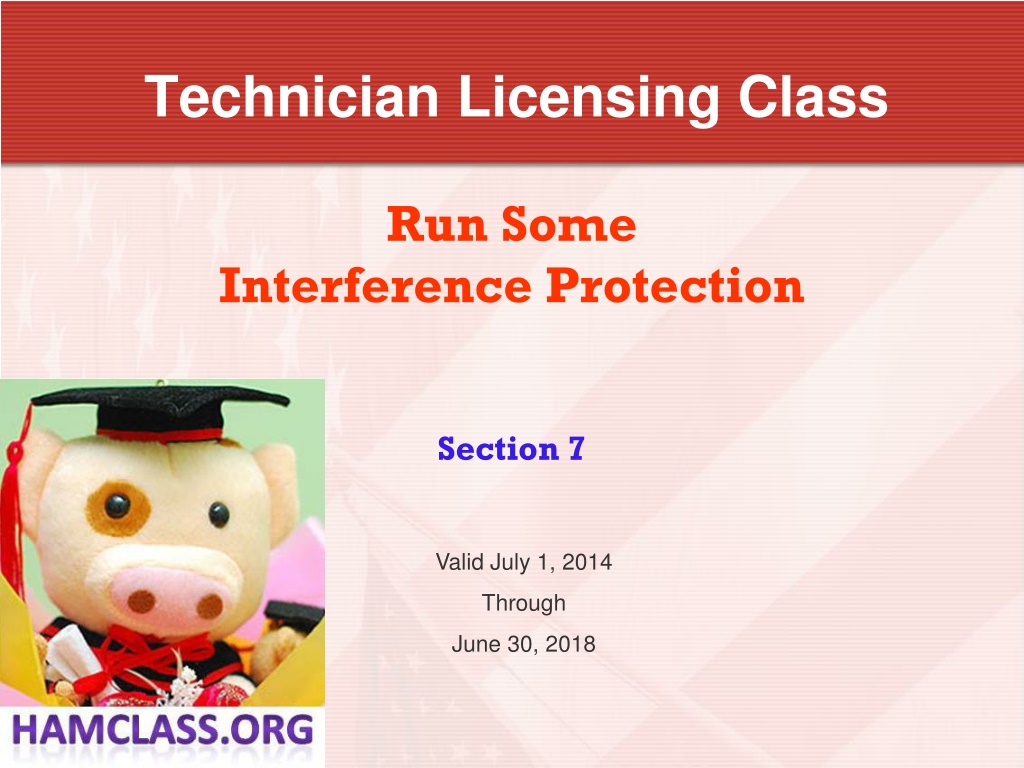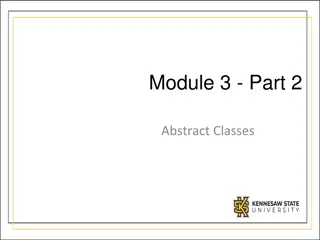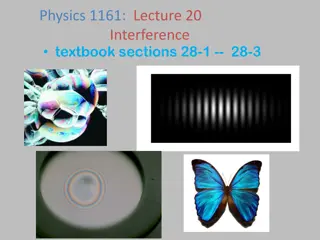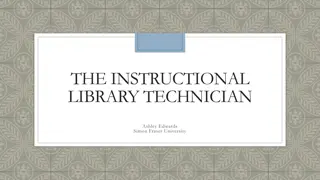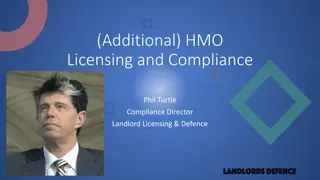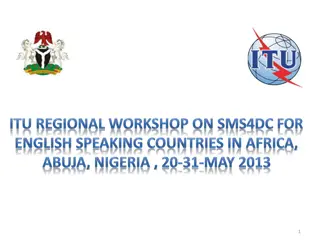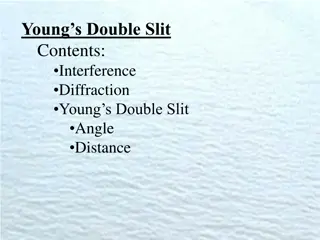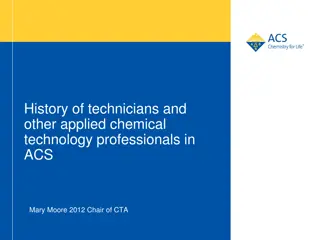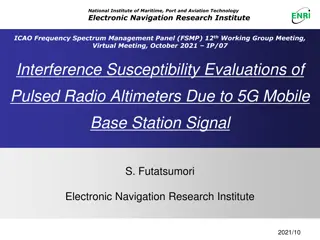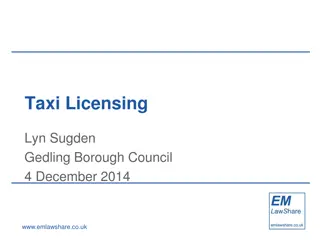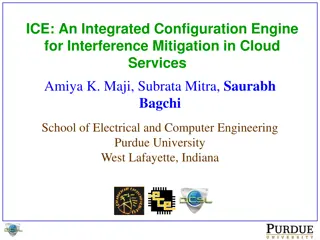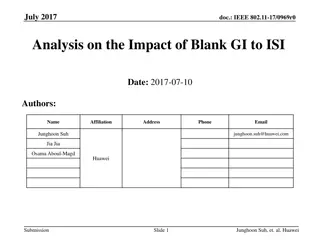Understanding Interference Protection in Technician Licensing Classes
Learn how to address audio signal distortion, microphone gain settings, and interference issues in radio transmissions to ensure clear communication and compliance with licensing regulations. Discover practical solutions like adjusting transmitter frequency, managing battery power, and using noise blankers to minimize unwanted noise. Explore techniques such as avoiding over-deviation, reducing electrical system interference, and proper cable connections to enhance the quality and reliability of your transmissions.
- Interference Protection
- Radio Communication
- Technician Licensing
- Transmission Quality
- Noise Reduction
Download Presentation

Please find below an Image/Link to download the presentation.
The content on the website is provided AS IS for your information and personal use only. It may not be sold, licensed, or shared on other websites without obtaining consent from the author. Download presentation by click this link. If you encounter any issues during the download, it is possible that the publisher has removed the file from their server.
E N D
Presentation Transcript
Technician Licensing Class Run Some Interference Protection Section 7 Valid July 1, 2014 Through June 30, 2018
Run Some Interference Protection T7B10 If you receive a report that your audio signal through the repeater is distorted or unintelligible: Your transmitter may be slightly off frequency, Your batteries may be running low, You could be in a bad location. T4B01If a transmitter is operated with the microphone gain set too high the output signal might become distorted.
Run Some Interference Protection T7B01If you are told your FM handheld or mobile transceiver is over deviating, talk farther away from the microphone. T2B07 If you receive a report that your station s transmissions are causing interference on nearby frequencies, your microphone gain is set too high and is causing over- deviation.
Run Some Interference Protection T4B05 Turning on the noise blanker would reduce ignition interference to a receiver. Not on common FM handheld or mobile FM radios On bigger high-frequency, multi-mode transceiver NB Noise Blanker PreAmp built in Even this older Icom 730 has the NB function
Run Some Interference Protection T4A12If another operator reports a variable high-pitched whine on the audio from your mobile transmitter, noise on the vehicle s electrical system is being transmitted along with your speech audio. T4A10The alternator is the source of a high-pitched whine that varies with engine speed in a mobile transceiver s receive audio. T4A09You would use a ferrite choke to reduce RF current flowing on the shield of an audio cable. Clam shell iron devices just snap on over wiring
Run Some Interference Protection T7B12The first step to resolve cable TV interference from you ham radio transmission is to be sure all TV coaxial connections are installed properly. T4A04Install a filter between the transmitter and antenna to reduce harmonic emissions. There are low-pass filters like this one, band-pass filters, and high-pass filters that can be used to solve interference problems
Run Some Interference Protection T6D12 A common reason to use shielded wire is to prevent coupling of unwanted signals to or from the wire . T7B02 A broadcast AM or FM radio will receive an amateur radio transmission unintentionally when the receiver is unable to reject strong signals from outside the AM or FM band.
Run Some Interference Protection T7B03Causes of radio frequency interference: Fundamental overload; Harmonics; Spurious emissions. T7B11Reports of garbled, distorted, or unintelligible transmissions can be caused by RF feedback in a transmitter or transceiver. Most likely cause is RF feedback between your antenna and mic T7B06If someone tells you that your station s transmissions are interfering with their radio or TV reception make sure that your station is operating properly and that it does not cause interference to your own radio or television when it is tuned to the same channel.
Run Some Interference Protection T7B05 Block the amateur signal with a filter at the antenna input of a non-amateur radio or TV receiver to reduce or eliminate overload by the amateur signal. T7B04Install an RF filter at the telephone as a logical first step when attempting to cure a radio frequency interference problem in a nearby telephone. Snap filters over telephone power cord Snap filters over curly cord Snap filters on the actual incoming telephone line cord The more you add, the less likely you ll have interference 9
Run Some Interference Protection T7B07The following may be useful in correcting a radio frequency interference problem: Snap-on ferrite chokes; Low-pass and high-pass filters; Band-reject and band-pass filters. 10 Notch Filter
Run Some Interference Protection T7B09 Part 15 device is an unlicensed device that may emit low powered radio signals of frequencies used by a licensed service. T7B08If a "Part 15" device in your neighbor s home is causing harmful interference to your amateur station: Work with your neighbor to identify the offending device; Politely inform your neighbor about the rules that require him to stop using the device if it causes interference; Check your station and make sure it meets the standards of
Take Aways ALL of these might be the problem if you receive a report that your audio signal through the repeater is distorted or unintelligible: Your transmitter may be slightly off frequency Your batteries may be running low You could be in a bad location If you are told your FM handheld or mobile transceiver is over deviating talk farther away from the microphone. If you receive a report that your station's transmissions are causing splatter or interference on nearby frequencies you should check your transmitter for off-frequency operation or spurious emissions.
Take Aways If a transmitter is operated with the microphone gain set too high the output signal might become distorted. Turn on the noise blanker to reduce ignition interference to a receiver. If another operator reports a variable high-pitched whine on the audio from your mobile transmitter, what could be happening is noise on the vehicle's electrical system is being transmitted along with your speech audio. The alternator is the source of a high-pitched whine that varies with engine speed in a mobile transceiver's receive audio.
Take Aways A Ferrite choke could be used to reduce RF current flowing on the shield of an audio cable. The first step to resolve cable TV interference from your ham tadio transmission is to be sure the all TV coaxial connections are installed properly. To reduce harmonic emissions, a filter would need to be installed between the transmitter and the antenna. ALL of the following may be a cause of radio frequency interference: Fundamental overload Harmonics Spurious emissions
Take Aways ALL of the following may be useful in correcting a radio frequency interference problem: Snap-on ferrite chokes Low-pass and high-pass filters Band-reject and band-pass filters Part 15 devices are unlicensed devices that use low-power radio signals. They are prohibited from causing interference to other licensed services (such as amateur radio) and must accept any interference from duly licensed transmitters.
Take Aways You should do all of the following if a "Part 15" device in your neighbor's home is causing harmful interference to your amateur station: Work with your neighbor to identify the offending device Politely inform your neighbor about the rules that require him to stop using the device if it causes interference Check your station and make sure it meets the standards of good amateur practice A common reason to use shielded wire is to prevent coupling of unwanted signals to or from the wire A broadcast AM or FM radio will receive an amateur radio transmission unintentionally when the receiver is unable to reject strong signals from outside the AM or FM band.
Take Aways A symptom of RF feedback in a transmitter or transceiver is reports of garbled, distorted, or unintelligible transmissions. If someone tells you that your station's transmissions are interfering with their radio or TV reception, what you should do first is make sure that your station is functioning properly and that it does not cause interference to your own television on the same channel. Block the amateur signal with a filter on the antenna input of a non-amateur radio or TV receiver to reduce or eliminate overload by the amateur signal. A logical first step when attempting to cure a radio frequency interference problem in a nearby telephone is to install an RF filter at the telephone.
Element 2 Technician Class Question Pool Run Some Interference Protection Valid July 1, 2014 Through June 30, 2018
T7B10 What might be the problem if you receive a report that your audio signal through the repeater is distorted or unintelligible? A. Your transmitter may be slightly off frequency B. Your batteries may be running low C. You could be in a bad location D. All of these choices are correct 20
T4B01 What may happen if a transmitter is operated with the microphone gain set too high? A. The output power might be too high B. The output signal might become distorted C. The frequency might vary D. The SWR might increase 21
T7B01 What can you do if you are told your FM handheld or mobile transceiver is over- deviating? A. Talk louder into the microphone B. Let the transceiver cool off C. Change to a higher power level D. Talk farther away from the microphone 22
T2B07 What could cause your FM signal to interfere with stations on nearby frequencies? A. Microphone gain too high, causing over-deviation B. SWR too high C. Incorrect CTCSS Tone D. All of these choices are correct 23
T4B05Which of the following would reduce ignition interference to a receiver? A. Change frequency slightly B. Decrease the squelch setting C. Turn on the noise blanker D. Use the RIT control 24
T4A10 What is the source of a high-pitched whine that varies with engine speed in a mobile transceiver s receive audio? A. The ignition system B. The alternator C. The electric fuel pump D. Anti-lock braking system controllers 25
T4A12 What could be happening if another operator reports a variable high-pitched whine on the audio from your mobile transmitter? A. Your microphone is picking up noise from an open window B. You have the volume on your receiver set too high C. You need to adjust your squelch control D. Noise on the vehicle s electrical system is being transmitted along with your speech audio 26
T4A09 Which of the following could you use to cure distorted audio caused by RF current flowing on the shield of a microphone cable? A. Band-pass filter B. Low-pass filter C. Preamplifier D. Ferrite choke 27
T7B12 What might be the first step to resolve cable TV interference from your ham radio transmission? A. Add a low pass filter to the TV antenna input B. Add a high pass filter to the TV antenna input C. Add a preamplifier to the TV antenna input D. Be sure all TV coaxial connectors are installed properly 28
T4A04Where must a filter be installed to reduce harmonic emissions from your station? A. Between the transmitter and the antenna B. Between the receiver and the transmitter C. At the station power supply D. At the microphone 29
T7B03 Which of the following may be a cause of radio frequency interference? A. Fundamental overload B. Harmonics C. Spurious emissions D. All of these choices are correct 30
T7B11 What is a symptom of RF feedback in a transmitter or transceiver? A. Excessive SWR at the antenna connection B. The transmitter will not stay on the desired frequency C. Reports of garbled, distorted, or unintelligible transmissions D. Frequent blowing of power supply fuses 31
T6D12 Which of the following is a common reason to use shielded wire? A. To decrease the resistance of DC power connections B. To increase the current carrying capability of the wire C. To prevent coupling of unwanted signals to or from the wire D. To couple the wire to other signals 32
T7B06 Which of the following actions should you take if a neighbor tells you that your station s transmissions are interfering with their radio or TV reception? A. Make sure that your station is functioning properly and that it does not cause interference to your own radio or television when it is tuned to the same channel B. Immediately turn off your transmitter and contact the nearest FCC office for assistance C. Tell them that your license gives you the right to transmit and nothing can be done to reduce the interference D. Install a harmonic doubler on the output of your transmitter and tune it until the interference is eliminated 33
T7B02 What would cause a broadcast AM or FM radio to receive an amateur radio transmission unintentionally? A. The receiver is unable to reject strong signals outside the AM or FM band B. The microphone gain of the transmitter is turned up too high C. The audio amplifier of the transmitter is overloaded D. The deviation of an FM transmitter is set too low 34
T7B04 Which of the following is a way to reduce or eliminate interference by an amateur transmitter to a nearby telephone? A. Put a filter on the amateur transmitter B. Reduce the microphone gain C. Reduce the SWR on the transmitter transmission line D. Put an RF filter on the telephone 35
T7B07 Which of the following may be useful in correcting a radio frequency interference problem? A. Snap-on ferrite chokes B. Low-pass and high-pass filters C. band-reject and band-pass filters D. All of these choices are correct 36
T7B05 How can overload of a non-amateur radio or TV receiver by an amateur signal be reduced or eliminated? A. Block the amateur signal with a filter at the antenna input of the affected receiver B. Block the interfering signal with a filter on the amateur transmitter C. Switch the transmitter from FM to SSB D. Switch the transmitter to a narrow-band mode 37
T7B09 What is a Part 15 device? A. An unlicensed device that may emit low powered radio signals on frequencies used by a licensed service B. A type of amateur radio that can legally be used in the citizen s band C. A device for long distance communications using special codes sanctioned by the International Amateur Radio Union D. A type of test set used to determine whether a transmitter is in compliance with FCC regulation 91.15 38
T7B08 What should you do if something in a neighbor s home is causing harmful interference to your amateur station? A. Work with your neighbor to identify the offending device B. Politely inform your neighbor about the rules that prohibit the use of devices which cause interference C. Check your station and make sure it meets the standards of good amateur practice D. All of these choices are correct 39
